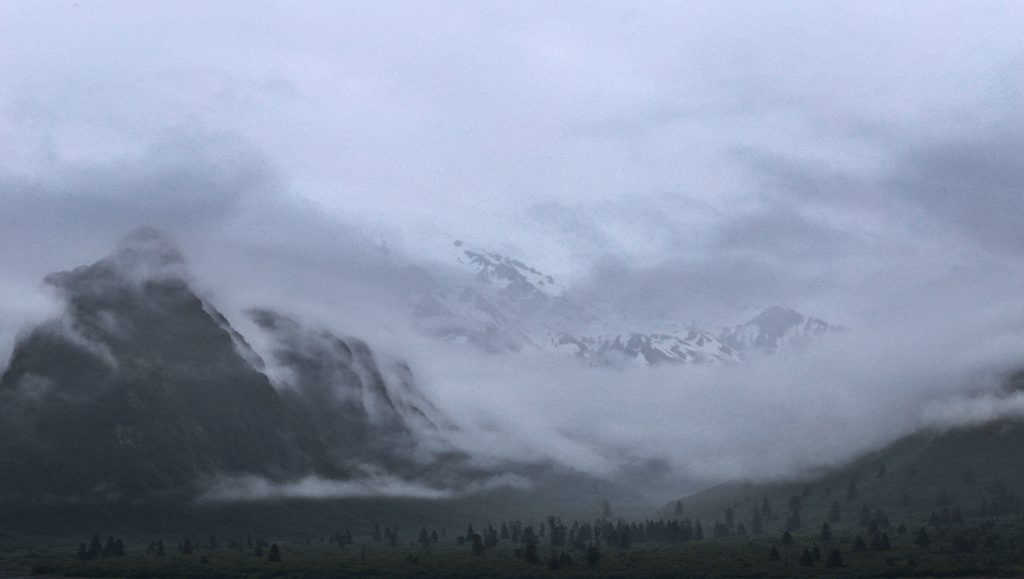Photography is often misunderstood as merely a way to document reality, but in truth, it is an art form as complex and expressive as painting or sculpture. For me, photography is not just a technical process—it is a creative pursuit that requires both artistic vision and craftsmanship.
Photography is not a substitute for an impotent desire to paint or draw. I am a classically trained painter, though I haven’t touched a paintbrush or charcoal pencil for many years, and also a graphic designer, though again, it has been so long it seems like another lifetime. I chose the photographic process over those methods because it was a greater challenge to me and, in my thinking at the time, offered greater opportunities for creative expression.
Having said that, photography is a legitimate art form with a set of parameters unique to this medium of expression. I photograph because of a love of the medium and because it helps to satisfy my creative desire. Photography is not a second-rate substitute for a first-rate medium to be carried out by frustrated painters. It is a legitimate art form with all the creative potential of any other medium, as well as the limitations of any other medium. People who pursue photography as frustrated painters would do well to pump gas or go into banking! They would be less frustrated, and we would be spared their miserable attempts.
The strength of photography is also its chief weakness. Photography has the ability to “capture” a moment in time, and because of this characteristic, it is automatically assumed that a photographic image is an accurate and exact portrayal of that moment. To compound the problem, the viewing public suffers under the delusion that the image, as presented on paper, is necessarily the way it was. That isn’t always the truth. The photograph is a vision of the artist’s reality—the reality the photographer wants to express, not only in the artist’s placement of the material but also in the way it is printed: how much contrast it has, how the colors are rendered, or not rendered in the case of a black-and-white photograph.
Creative expression relies on at least two factors. One is, most obviously, the unique creative vision of the photographer. The other is the developed craftsmanship of the image maker. This is especially true of the denizen of the darkroom, that murky room of great mystery where light dares not travel! The darkroom worker must be aware of several factors all at the same time because a mistake there means that the image might be lost forever! It is also true of the “light room” worker—not to be confused with the photographic software of the same name. An individual may be the most creative person ever to walk the planet and possess the most unique vision, but if craftsmanship is lacking, the vision becomes an impotent expression, existing only inside the creator’s head. So, we must have great craftsmanship! But enormous craftsmanship isn’t the only factor.
Creativity rests on at least two factors: the outflow of ideas from a unique human spirit and the level of craftsmanship developed by the photographer/artist. Lacking genuinely unique ideas, the photograph becomes a weak imitation of someone else’s work. And absent a highly developed level of craftsmanship on the part of the photographer, no one will want to view the image. Craftsmanship can be taught to a degree. Creativity cannot. It can only be recognized and developed by the individual. There are no shortcuts in either case.
Perhaps all individuals are creative. In fact, studies have shown that 95% of all children are creative geniuses until the age of five when adults start teaching them that they are not extraordinary and surely aren’t creative. But that’s a different essay for a different forum since it is not directly photographic. Most people are creative, even highly creative, just in different areas. The problem develops when people start moving out of their natural area of creativity and try to become something they are not. For instance, I may aspire to be an NBA superstar, an all-star, and a champion. However, I am 5’8” and have a 40-yard dash time of 45 seconds… probably not NBA material. So, I may have the aspiration but not the basic skill set. The art of photography requires both well-developed craftsmanship and artistic vision.
So, I began pondering the creative process, trying to break it down into steps. As I thought about it, it seemed to me that creativity could be broken down into at least five stages.
Perception
Before there can be creation, there must be perception. Before any actual creation takes place, there has to be an idea. That is—or should be—the genesis of all creativity. Ideas! Whether the image springs from a brainstorm, something seen while out walking a dog, hiking in the woods, or on the beach, or is inspired by something else we have seen.
I am often captivated by a form or the shape of an object seen while out—and that is one reason I work best alone. I am not distracted by a side conversation, someone else’s mindless prattle, or the music they feel they must have. Silence and solitude serve me well. It is said that all creativity is plagiarism, and genius is well-disguised plagiarism. Whatever the original source may be, my photographs are the result of ideas. So, the basic question is: what attracted me to this, and how can I build a composition that says what I want it to say?
Evaluation
Once the idea is perceived, it must be evaluated. What should I include? What should be excluded? Often, the statement we want to make is made even more powerful by what is not said. Will the image be in black and white or in color?
In the days when every photographer carried a pack loaded with film, we often carried both black-and-white and color film. If the photographer used roll film, only one roll per camera body was possible, with a couple of notable exceptions. Those of us who carried large format cameras could load some holders with black-and-white film and some with color. So, we had to decide in the moment what to do. Digital allows for more options, of course, but even so, decisions made in the field can be useful when the work of rendering the photograph begins.
But decisions have to be made. There are many artistic decisions to be made at this point, and when you are working with film, they have to be the right decisions! In this instance, the overall exposure was 30 minutes, so having people in the exposure was inevitable. At first, I would flag the lens until they moved out, but I realized that was an impossible game. It became necessary to adapt, and since the exposure was that long, I knew that the worshipers would not appear as recognizable people in the final image. So, I just allowed the film to be exposed.
(By the way, some may wonder why the exposure was so long. Working with large cameras, as I do, my base exposure is often a multiple of what it would be using a smaller camera like a DSLR or a 35mm camera. Then, as the exposure gets longer—more than one second—a phenomenon called reciprocity failure occurs. This means that the longer an exposure is, the longer it actually needs to be when using film. Below certain light levels, film loses its ability to respond to light in a normal way. In this case, the light inside the church was dim, and the actual base exposure at f/45 was 10 minutes. With reciprocity taken into account, the actual exposure became 30 minutes.)
Even with digital, the decisions made here will often dictate how the image is developed later. I always tell my film students that they must ensure the shadow areas receive enough exposure, even if the darkest areas will be printed as solid black with no detail. The detail must be captured in case they want to reveal it later. When working with slide film, maintaining highlight detail is critical. With digital, checking the histogram is essential—the LCD screen on the back of the camera can be misleading. A great photograph is nearly impossible to achieve if the original exposure and development are faulty.
Interpretation
A very common and huge misconception about photography is that the image, as presented, represents reality exactly as it was. Few statements could be more inaccurate. The artist-photographer has great liberty in presenting their interpretation of the scene—the photographer’s emotional response to the moment.
Whether working in black and white or color, many creative decisions must be made in the final interpretation of the image. And even the final image may evolve over time. Something as simple as the artist’s stage in life and experiences after the original exposure can influence how the final print is presented. As the artist gains more skill, and as new materials become available (or some become unavailable), the interpretation of an image can change.
For example, in the interpretation of the image above, I loved the composition, but I misjudged my depth of field by a long shot, and the lower right corner is too soft for my taste. The obvious solution—though not ideal—was to lower the contrast in that area and print it darker. While I would prefer it to be sharper, I can at least minimize the distraction by reducing its visual weight.
Execution
Paul Strand once said, “Craftsmanship—there is no substitute for craftsmanship.” A person with artistic vision but no craftsmanship is not an artist; they are merely perceptive. A person who is a master craftsman but lacks original perception may not be an artist either, though they may be a skilled technician, capable of perfectly replicating a masterpiece. But replication is not art.
The true artist combines perception and sensitivity with craftsmanship. And the skills of craftsmanship must be practiced often, as they are perishable and can be lost over time. Pablo Casals, perhaps the greatest cellist of all time, was known to practice scales for hours each day, even into his nineties. When asked why, he replied, “I think I am making progress.”
Presentation
So, we must make decisions about how we present our work.
I have chosen to always present my work a certain way: using a white or near-white mat board with the photographic image squared up to the canvas and mounted in the center. I use a single four-ply over-mat with a relief of either ¾ inch or a full inch, depending on the image and mat size.
For personal use and teaching samples, I prefer Crescent Arctic White 4-ply mat board. For galleries or collectors, I use Bainbridge Alpha Mat Rag 4-ply mat board. All mats are signed on the face with a very hard lead pencil, such as a #4 lead, in the lower left corner, and dated by the year in the lower right corner. Titles, signatures, dates, and edition numbers (if applicable) are noted on the back in archival ink, taking care to prevent bleeding through. These are the choices I have made for my artwork, and I remain consistent in my presentation.
(This, by the way, is an illegal photograph! I was driving toward the Dream Lake Trailhead when I noticed this scene in my rearview mirror. I stopped to take the shot, but along came “Ranger Doug.” (If you’re a Riders in the Sky cowboy music fan, you’ll get the reference!) “You can’t stop here,” said he. So, I moseyed along. On my way back down just five minutes later, there it was again. I stopped, jumped out, made the exposure on my digital camera, and scurried down the old cowboy trail.)
FYI, the photograph at the head of this article is called “A View of Paradise.” It was taken from the deck of a cruise ship moving away from the face of Sawyer Glacier. There was so much moisture in the air that, at a distance of only a few hundred feet, everything appeared semi-foggy.
For this shot, I used a Canon 6D body with a Canon 400mm f/4 DO lens and a 1.4x EF teleconverter. Although this is an inhospitable place if you aren’t well-prepared, it looked like paradise to me.
I recommend B&H for your Canon, or any other, camera supplies. My expendable supplies like film and darkroom chemicals also come from B&H.







